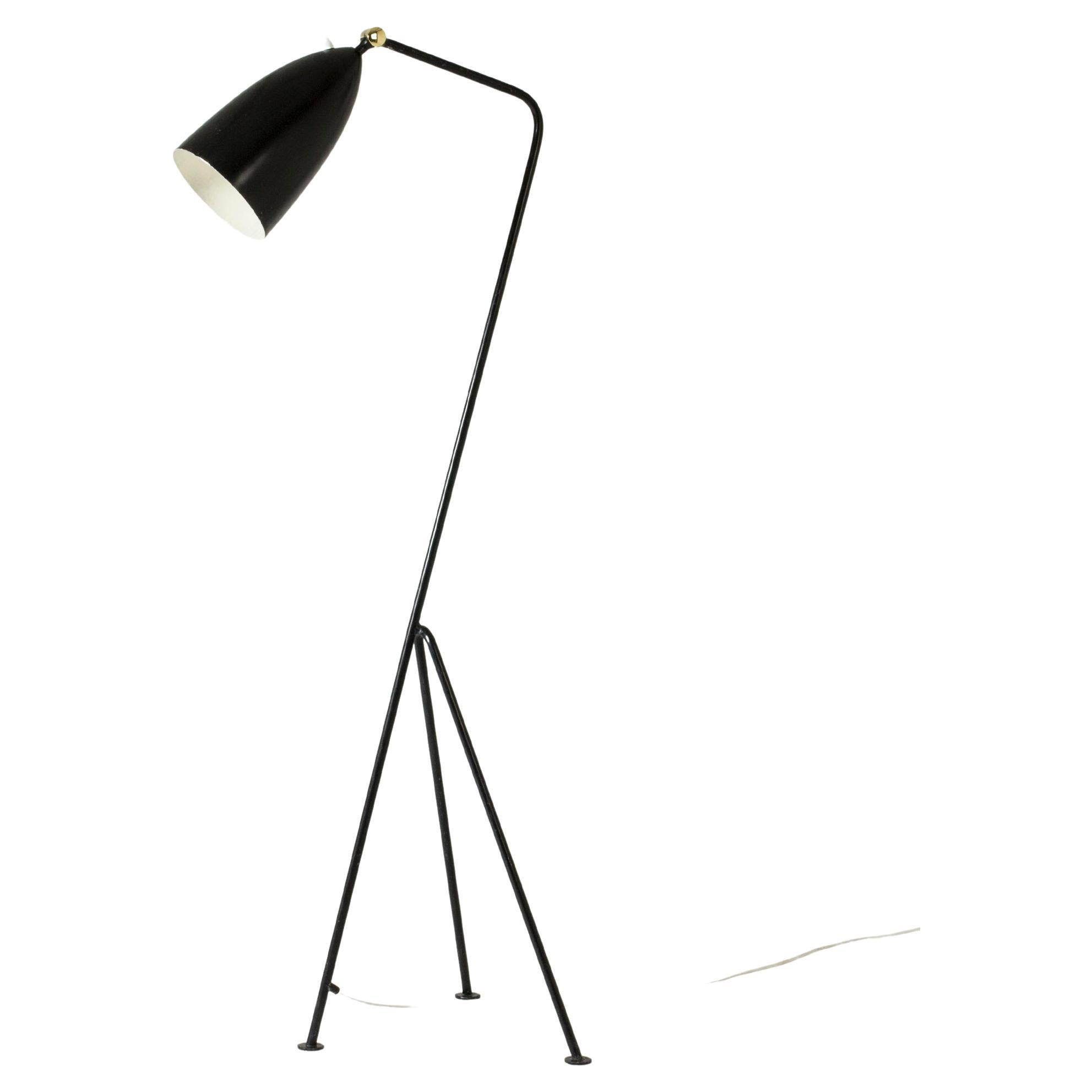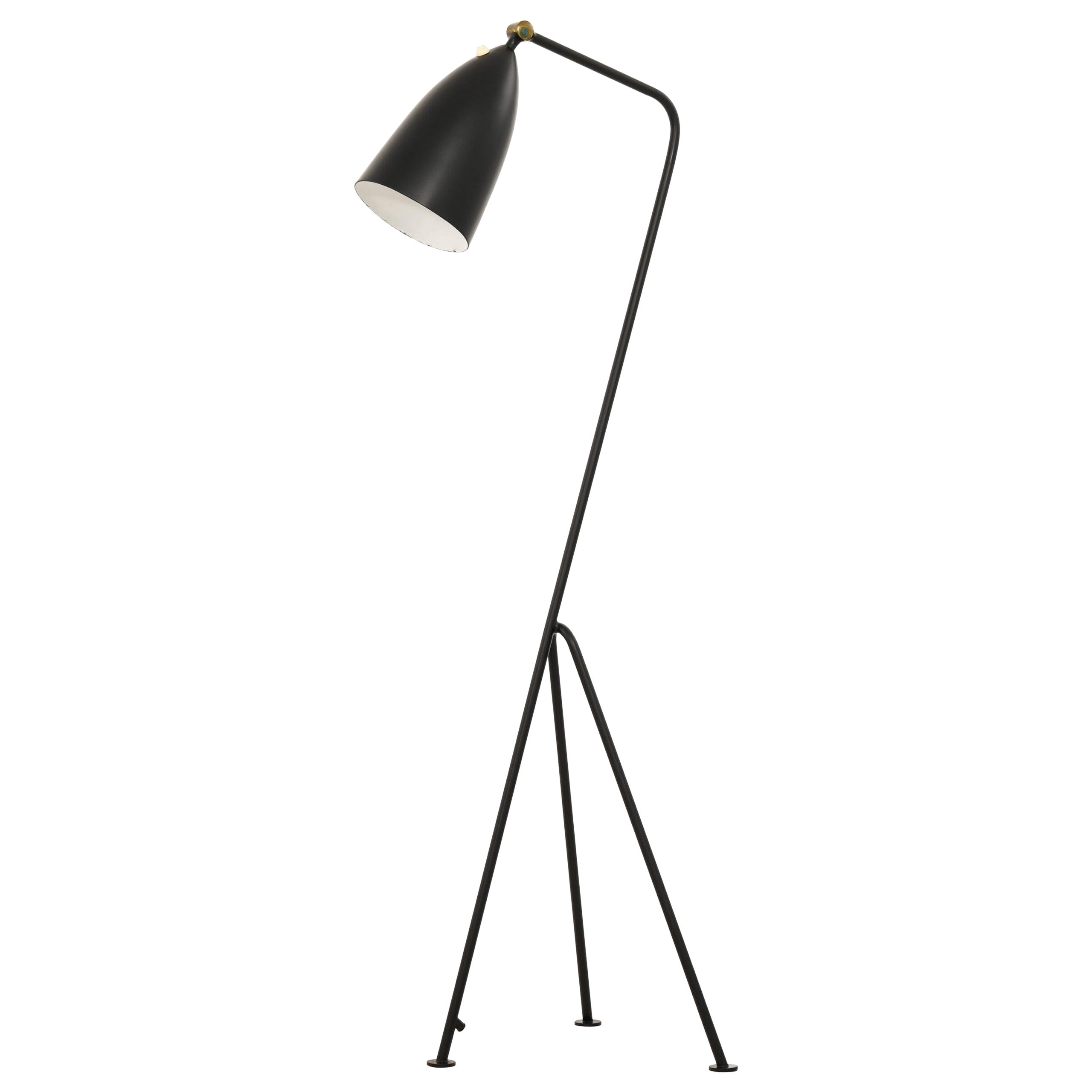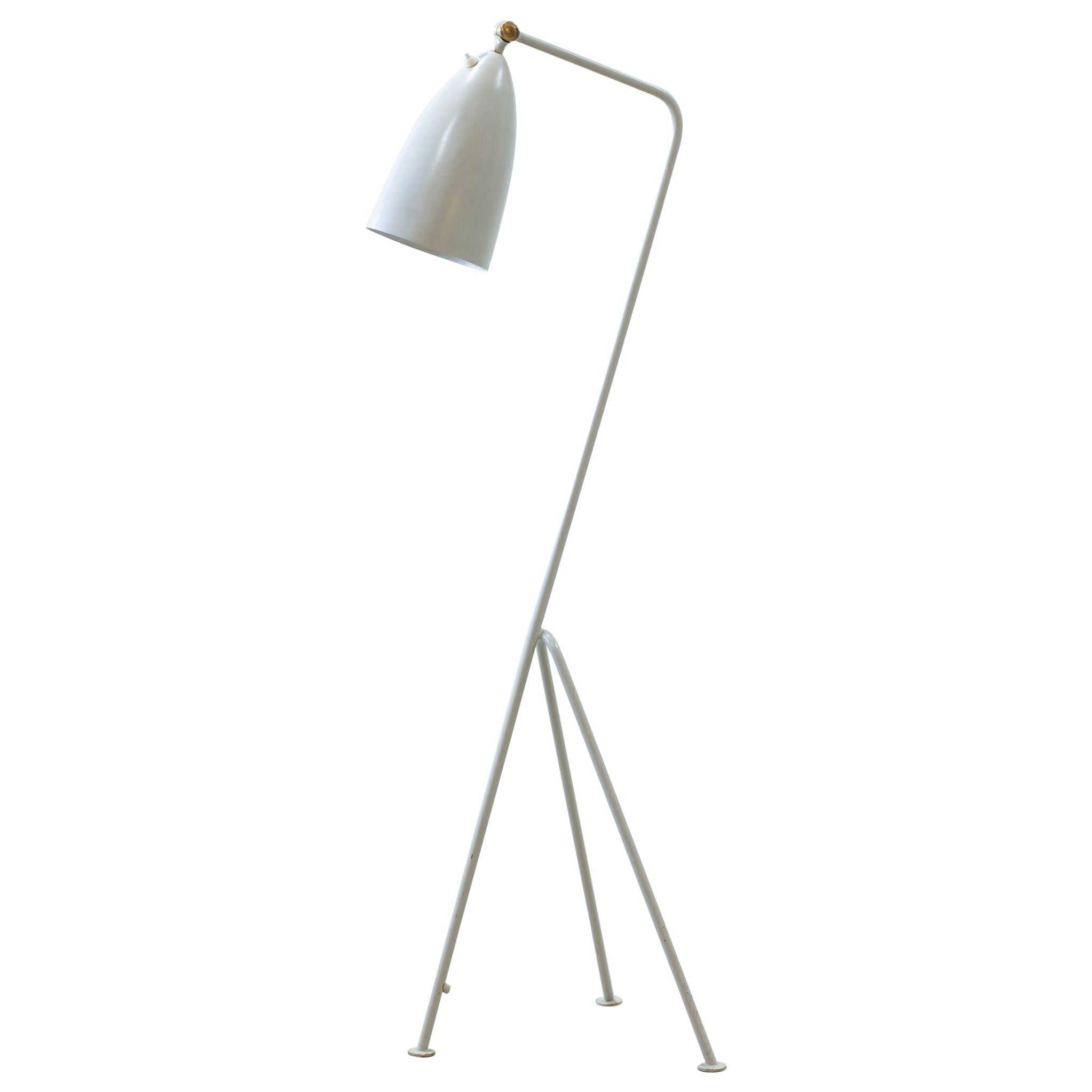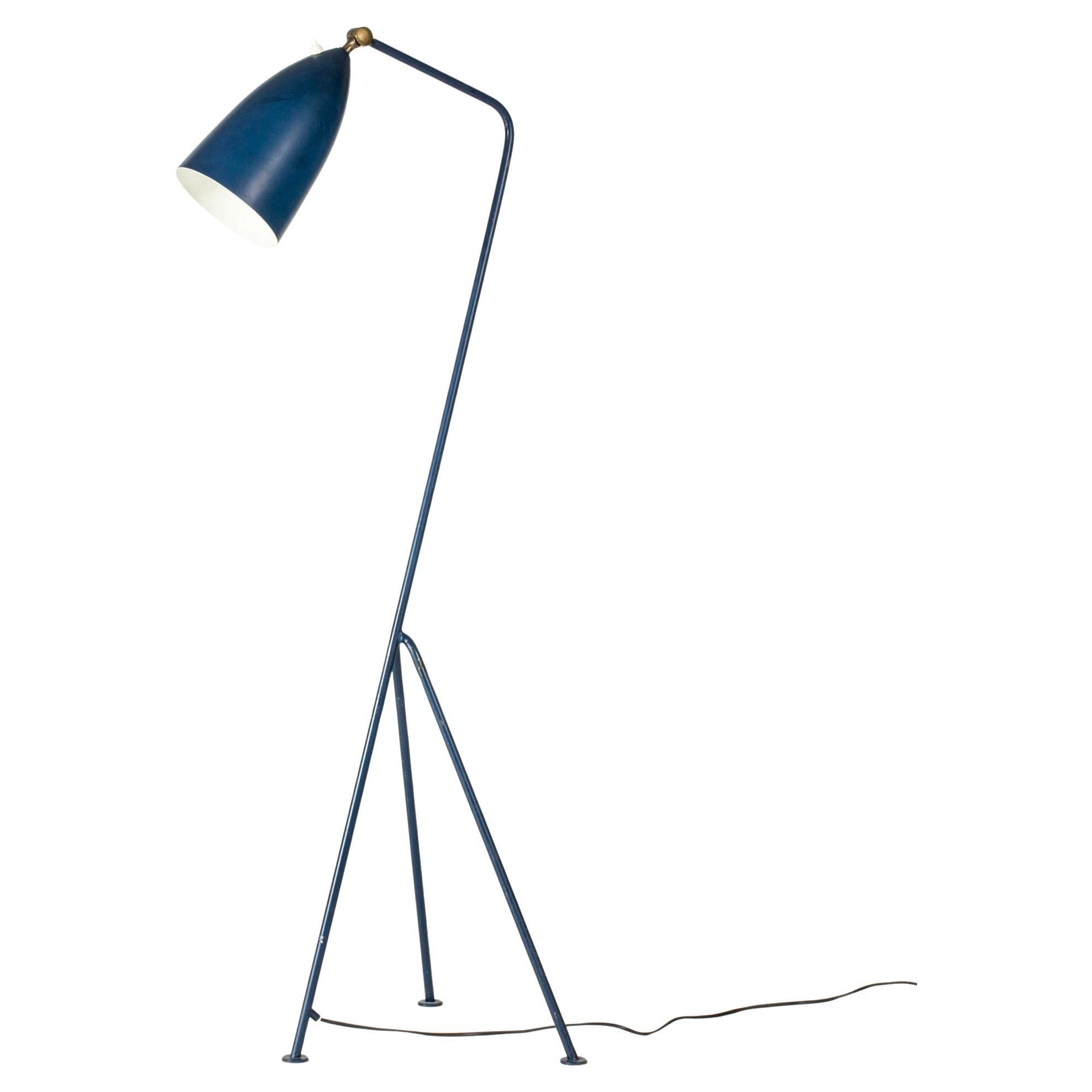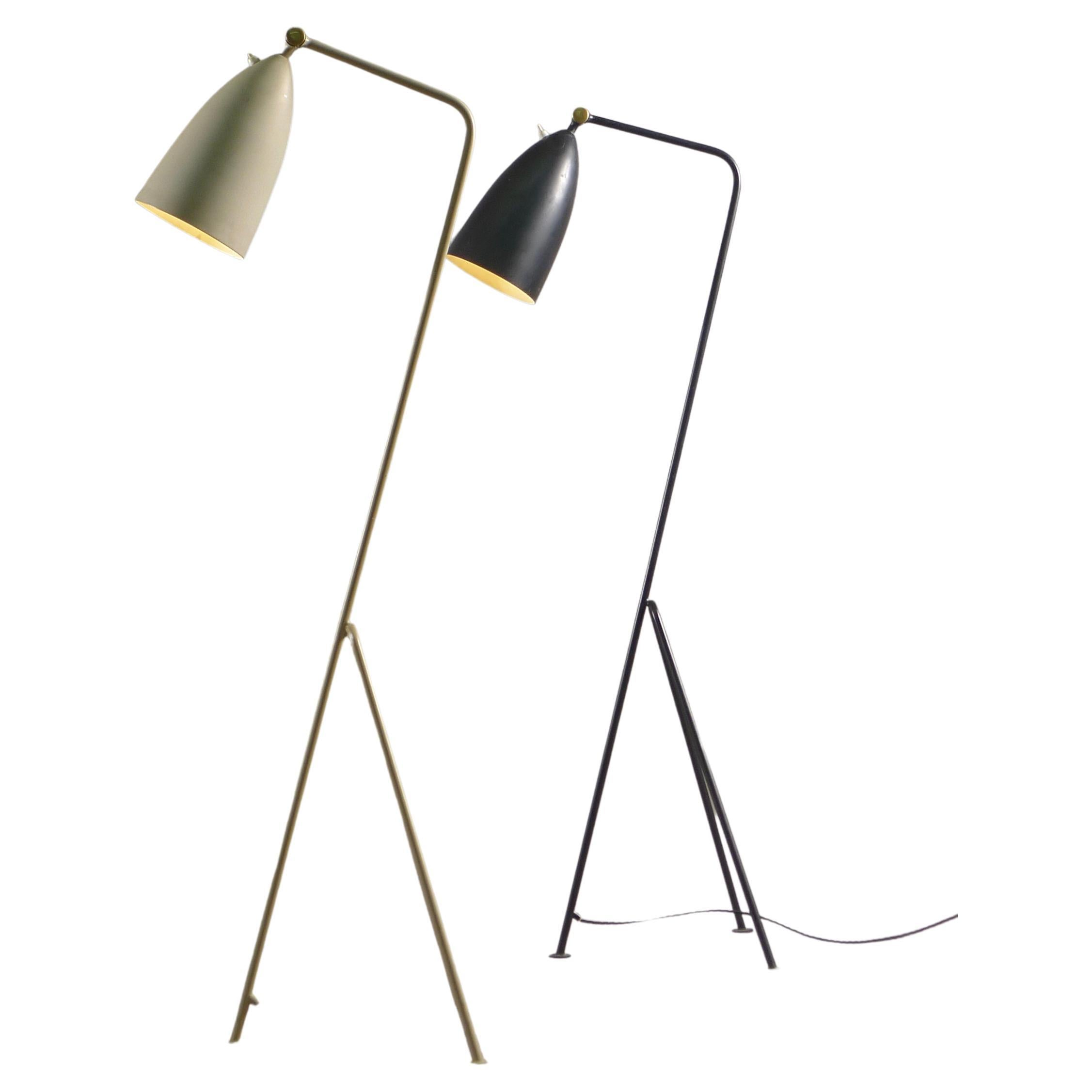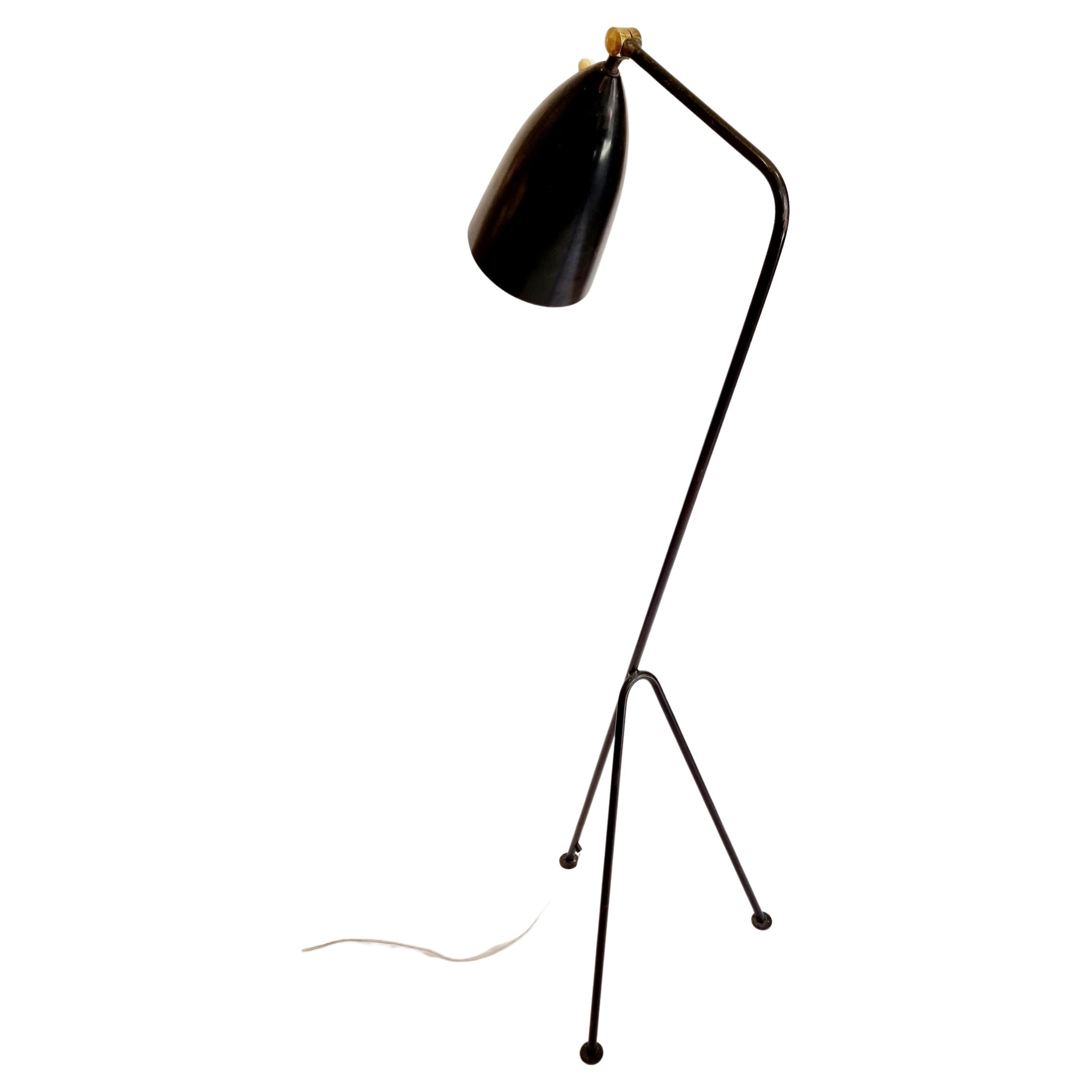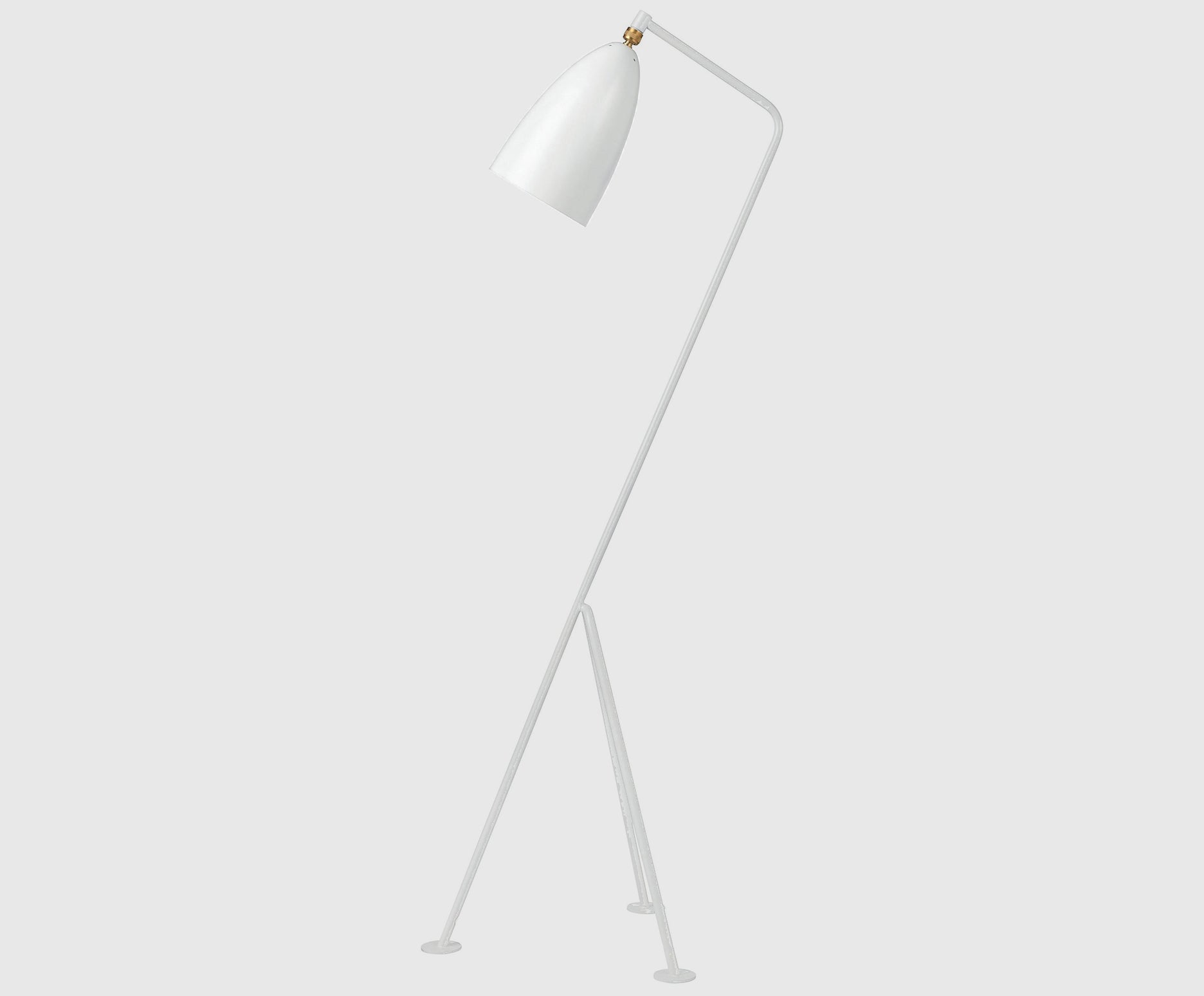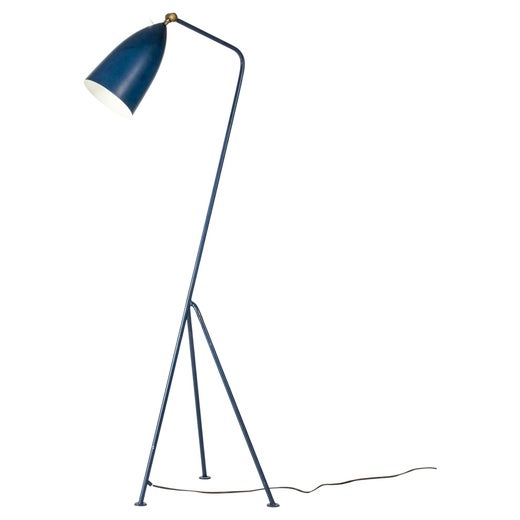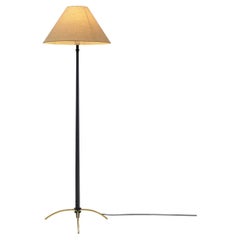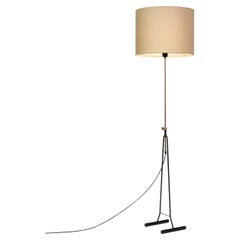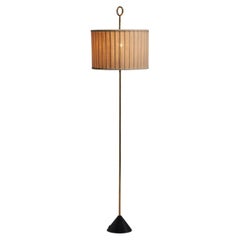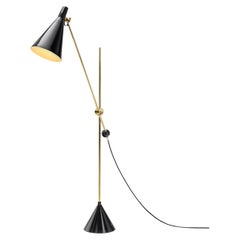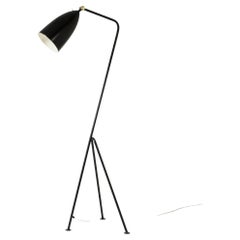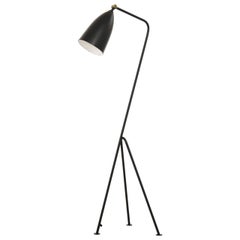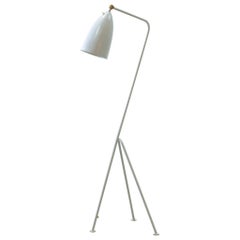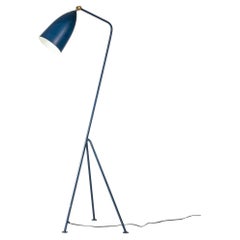Greta Magnusson Grossman "Grasshopper" Floor Lamp for Bergboms, Sweden 1947
About the Item
- Creator:Greta Magnusson Grossman (Designer)
- Design:
- Dimensions:Height: 48.82 in (124 cm)Width: 14.18 in (36 cm)Depth: 14.57 in (37 cm)
- Style:Scandinavian Modern (Of the Period)
- Materials and Techniques:
- Place of Origin:
- Period:
- Date of Manufacture:1947
- Condition:Wear consistent with age and use. Some scratches and minor dents.
- Seller Location:Utrecht, NL
- Reference Number:Seller: 202004061stDibs: LU2947329346122
Grasshopper Floor Lamp
Lithe, charismatic and distinctly functional, the 1947 Gräshoppa — or Grasshopper — lamp demonstrates designer Greta Magnusson Grossman’s keen eye and mastery of quiet drama. Easy to incorporate into any space with its graceful, slender shape, the Grasshopper boasts an elongated shade on an articulating bulb stem, which allows a user to direct light without a spotlight effect.
Magnusson Grossman’s original Grasshopper featured a black-enameled steel frame, brass hinge and aluminum shade. There was also a black enamel exterior and a white interior to better reflect light. By the time she designed the lamp, Magnusson Grossman (1906–99) had already cemented her legacy as a leading modern maker, whose dual ties to Scandinavian and American design equipped her with a unique perspective. Born into a family of Swedish cabinetmakers, Magnusson Grossman studied architecture at the Royal Academy of Technology in Stockholm and later opened her first workshop, Studio, in Stockholm in 1933. Seven years later, she and her husband moved to Los Angeles, where they opened Magnusson Grossman Studio on Rodeo Drive. The studio counted such stars as Greta Garbo, Joan Fontaine and Gracie Allen as clients.
By the late 1940s, Magnusson Grossman was also flexing her interior design muscles. She decorated more than a dozen Los Angeles homes, which were frequently photographed for magazines like Art & Architecture. The houses, which were noted for their small scale and graceful architecture, were outfitted with Magnusson Grossman’s designs — the Grasshopper being a frequent fixture. The lamp, as well as the table version, is still produced by Swedish manufacturer Gubi today.
Greta Magnusson Grossman
Designer and architect Greta Magnusson Grossman first gained fame in her native Sweden, where she established her store and workshop and became the first woman to receive a prize for furniture design from the Swedish Society of Industrial Design. In 1940, she married jazz musician Billy Grossman and moved to Los Angeles.
Upon her arrival in Southern California, she opened the Magnusson Grossman Studio on Rodeo Drive and rapidly became popular among the Hollywood elite, including Greta Garbo and Gracie Allen.
In addition to creating iconic furniture and lighting — like the Grasshopper series for Barker Bros. or the Cobra lamp for Ralph O. Smith — Magnusson Grossman designed 14 homes in the Los Angeles area inspired by the Case Study Houses.
Combining her Scandinavian roots with laid-back West Coast style, Magnusson Grossman became a notable contributor to California modernism.
Find a range of vintage Greta Magnusson Grossman table lamps, floor lamps and other furniture on 1stDibs.
- ShippingRetrieving quote...Shipping from: Utrecht, Netherlands
- Return Policy
More From This Seller
View AllVintage 1960s Swedish Mid-Century Modern Floor Lamps
Metal, Brass
Vintage 1950s Swedish Mid-Century Modern Floor Lamps
Metal, Brass
Vintage 1950s Swedish Mid-Century Modern Floor Lamps
Brass
Vintage 1950s Finnish Mid-Century Modern Floor Lamps
Brass
Vintage 1950s Swedish Mid-Century Modern Floor Lamps
Brass
Vintage 1950s Swedish Mid-Century Modern Floor Lamps
Brass, Iron
You May Also Like
Vintage 1950s Swedish Scandinavian Modern Floor Lamps
Metal
Vintage 1950s Swedish Scandinavian Modern Floor Lamps
Metal, Brass
Vintage 1940s Swedish Scandinavian Modern Floor Lamps
Metal, Brass
Vintage 1950s Swedish Scandinavian Modern Floor Lamps
Metal
Vintage 1950s Swedish Mid-Century Modern Floor Lamps
Metal
Vintage 1950s Swedish Scandinavian Modern Floor Lamps
Metal, Brass
